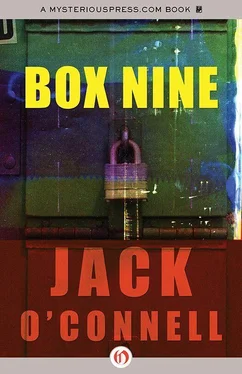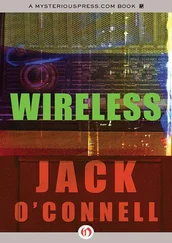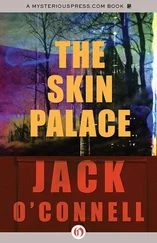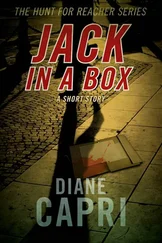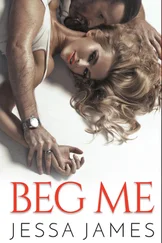Lenore and Cortez have never spoken. All of the communication between them is suggested, implied, an almost too-subtle blend of gesture, attitude, eye movement. She thinks he’s aware that she’s protected him from serious harm for over a year now. He thinks she knows he’s placed her off limits for the normal Park harassments and shakedowns that fall under his domain. They’ve both extended these cloaks of safety for a common, simple reason: they both want to see what will happen in the course of their future interactions.
Cortez secretly refers to Lenore as “the Widow” because of her penchant for wearing black when visibly in the Park. No one understands the intricacies or delicate logics of their relationship and, in fact, though unbeknownst to her, it is Lenore that has been the cause of so many of the right-hand men getting the sack. Already Mingo Bouza, wise in his own way, suspects this. He treads lightly when the boss makes obscure comments about the Widow from the backseat of the Jaguar.
Lenore and Cortez have never really come into direct contact. They see each other from a distance, on the street late at night. They have winked to each other across the packed dance floor at Club 62, in the lobby of Hotel Penumbra. They communicate solely through the written word. They seem to leave humorous and taunting messages for each other in odd, exposed locations — graffiti scrawled in telephone booths and on the walls of dingy unisex rest rooms. Cortez has Mingo drive to strange spots in the middle of the night, run to a designated area, and copy down words off a wall, into an expensive leather notebook. Sometimes, Mingo’s instructed to leave behind some words he doesn’t even understand.
• • •
“How much do you know about this Cortez character?” Woo asks.
“More than anybody else,” Lenore says.
Woo’s presence is more than an aggravation. It’s a kind of personal insult. There’s no way the mayor can know what he’s doing to her, forcing on her the presence of Dr. Woo. It’s an intrusion on the one area of life, the few continuous moments, where she’s satisfied. And in this way, it’s like a subtle rape, a forcing of an alien will. But the rapist isn’t Woo. It isn’t even Miskewitz. The attacker is Welby and Lenore won’t forget that.
She decides to talk, to lay out what she knows. It isn’t that she has any interest in appeasing Woo or being polite or helpful. It’s simply that she loves talking about Cortez and is frustrated by the limits she’s imposed upon herself. Talking about him makes her feel more connected to him, more a part of his world. She wonders, given the right set of tragic circumstances, could she ever draw down on Cortez, grip tight on the Magnum, and fire death into his chest? Unfortunately she knows that she could, that there would be little question about what to do, that self-preservation would carry the day and she’d leave the King of Bangkok in a bloody, gasping heap outside the revolving doors of the Hotel Penumbra.
“The big fact that you have to know,” she says to Woo, “is that Cortez is the King of Bangkok.”
Woo nods, feeling hip, feeling like he’s ready to slide into the swing of things. “He’s the top dog,” he says.
Lenore raises her voice. “That’s not what I said. I said he’s the King of Bangkok. Inside Bangkok, he’s the King. But Bangkok isn’t the whole world, is it? There’s a lot more terrain to this planet than Bangkok Park, right?”
Woo is at once cut back to a fumbling humility. He goes quiet and Lenore, content in his silencing, begins her story.
• • •
Cortez’s history begins the day he got off the bus in Quinsigamond. Logic and the nature of life tell Lenore that he obviously came from somewhere, that there is more information, probably stored somewhere south of the border, in bulging police files in Colombia or Bolivia. But that ancient history is incidental.
Lenore became involved the second that Cortez’s snakeskin-booted heels touched down on the asphalt of her city’s Greyhound station. She wonders if, on that particular day, she felt a change in the atmosphere, noticed some unexplainable rise or dip in the barometric pressure around her body. At the time there would have been no way to ascribe a relevance to it, but today, she swears, she can feel the flux in the air when Cortez’s Jaguar gets within a block of her.
At first Cortez was just one more player in the overload of aspiring brokers feeding off the decay of the Park. Now, his displaced contemporaries will say he had no blueprint, that he tried a little of everything — pimping, extortion, the smack trade. Lenore finds this very hard to believe. She thinks it’s an impression that grows out of the fact that Cortez is so good at thinking on his feet in continually changeable, pressure-filled situations that associates start to decide this indicates a lack of long-range planning skills and backup contingencies. Lenore thinks that the two virtues are not mutually exclusive. She finds them both in herself.
Whatever his endeavor, Cortez started cornering markets within his first six months as a Park resident. His unique intelligence and personality and ability to judge character combined with an innate sense for reading the marketplace that would have done just as well on Madison Avenue or Wall Street.
Cortez reaped huge cash profits in his first year as a “no-holds-barred entrepreneur.” Like an old-time Yankee baron with a sense for building solid and conservative foundations, Cortez plowed big chunks of his income into real estate. Virtually every piece of land was for sale in Bangkok Park and Cortez seemed to gobble most of it up. At the Quinsigamond Registry of Deeds, his company, Rayuela Realty Trust, vied with an ancient Boston banking conglomerate for most tides recorded in the shortest period of time.
Ironically, Cortez considered his finest acquisition that first year to be the old and decrepit Hotel Penumbra. He loved the look of the place, its weird, monstrous facade. The building had been put up back around 1900 by an architect with a sense of the threatening and the theatrical and a strange love for a mutant design that was part High Gothic and part art deco.
Cortez made the building his home and business headquarters and then he went a step further. He set about to invest the old hotel with his own character, to will it into a perfect representation of his personality, a signpost of his Olympian goals, a chronic, granite reminder of his very presence and force on the landscape. He wanted a dark and frightening shrine to his power, his essence as defined by real estate.
The transformation turned the hotel, already something old and interesting, into something bizarre, a surreal stationary carnival injected into the heart of Goulden Avenue.
Now, as before, the building sits five stories high. But in clearing away a century of grime and dust, it came to look taller, to stretch wider on the block. The outer face of the building is an illogical mix of marble, sandstone, granite, and a copper that oxidized within the first ten years and settled into a sea-green color. The whole ark is a maze of jutting angles, most set at forty-five degrees. The main entrance is a row of revolving doors, which means that luggage must be brought in through a side door. Above the entrance is a flat awning-overhang made of hand-scrolled copper and electrified with hundreds of glowing bulbs. It’s held up above the sidewalk by four sets of enormous linked chains that stretch up into the air like the fat lines of a whaling ship, then mount into the side of the hotel in black iron sockets that look like portholes. Three sets of windows run up the front of the building, the middle set recessed slightly and the set on either side protruding like enclosed medieval king’s balconies, ornamented with tiny copper catwalks with iron-bar railings. The top of the building rises up with two towering octagonal spires with hideous gargoyles running around their bases. Lightning rods with silver-ball tops rise out of the spires and Cortez has made them into twin flagpoles from which he flies huge flags bearing his family crest. At night, he illuminates them with unreal blue-white beams from a row of antique, Broadway-style klieg lights mounted on the roof.
Читать дальше
